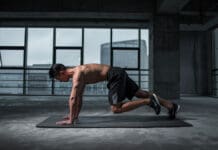Every man walking the face of the earth, as at one point in their lives attempted to take on a fitness program. Especially when you are trying to lose weight, you try to get advice on how to keep fit from relatives and friends. Only to find out that this well-intentioned advice is actually a fabrication that holds no water. After weeks of performing sit-ups, you find out your six-pack dreams are just that, dreams. Also, there’s that one time we heard that lifting weights would help you burn fats faster than running.
Though we have come to identify some fitness myths mostly through experience, and try our best to stay informed on fitness and health exercises. There are still some myths that still manage to avoid detection by the general society. Many a time we get to see personal trainers offer these myths up to their trainees as fact, with most of these actually causing more damage than harm.
Below is a list of some of the more commonly practiced training advice most men follow during fitness training that is actually false
Doing Planks All Day Would Build Your Abs
Almost every trainer has fallen for this oversimplified statement. Performing planks during your ab building is usually a great way of going about it, but abs building requires you undertaking planks complimented with other midsection exercises for an effective abs training session. Combining planks with exercises such as cable woodchops, hanging leg raises and wheel roll-outs.
Your Size Is A Measure Of Your Strength
Though a bodybuilder would generally be stronger than an average man of the same size, the belief that more size equals more strength is totally false. Exercises aimed at building your body bulk which is referred to as sarcoplasmic hypertrophy increases the amount of fluid present in your muscles with little or no increase in strength.
You Can Get Bulky By Lifting Heavy Weights
Lifting heavy weights has no influence on your bulk weight, rather it helps you gain strength. A training to build on your bulk would involve you getting excess calories through a specific diet coupled with low to heavy weight lifting. While, on the other hand lifting heavy weights within short sessions and long spans of rest would have you stronger than ever without the bulk
The Yardstick For Measuring Progress Is Muscle Soreness
Numerous people are told that if after a training session they don’t feel sore, it meant they didn’t work hard enough and would see little or no progress. This, of course, has not an ounce of truth in it. You could spend months training while displaying a high level of progress and still not suffer from DOMS (Delayed Onset Muscle Soreness). Research has proved that we suffer DOMS mostly due to attempting a new training plan or regime our body isn’t accustomed to.
Your Knees Take Damage During Squats
On the contrary, performing squats especially when executed properly can be very beneficial. You gain not only strength but also stability in areas around your knee joints through proper squats, which helps to develop you into a better athlete.











